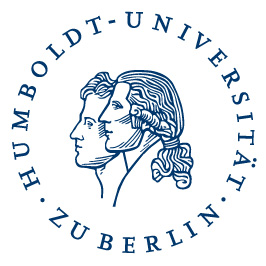Publications:
Seeger, M. (in press). Immunity and Self-Awareness. Philosophers’ Imprint.
Vosgerau G & Voss M. (2014). Authorship and Control over Thoughts. Mind & Language 29(5):534-565.
Seeger, M. (2014). Immunity to Error through Misidentification and Thought Insertion. PhD thesis, Faculty of Philosophy, Heinrich-Heine-Universität Düsseldorf. http://docserv.uni-duesseldorf.de/servlets/DocumentServlet?id=32896
Seeger, M. (2014). Which-Object Misidentification. Abstracta 8(1):75-82.
Seeger, M. (2014). Authorship of thoughts in thought insertion: What is it for a thought to be one’s own? Philosophical Psychology, online first (www.tandfonline.com/doi/abs/10.1080/09515089.2014.942897).
Simon, D., Adler, N., Kaufmann, C. & Kathmann, N. (2014). Amygdala hyperactivation during symptom provocation in obsessive-compulsive disorder and its modulation by distraction. NeuroImage: Clinical, 4:549-557. DOI: 10.1016/j.nicl.2014.03.011.
Werner JD, Trapp K, Wüstenberg T & Voss M. (2014) Self-attribution bias during continuous action-effect monitoring in patients with schizophrenia. Schizophr Res. 152(1):33-40.
Kühn, S., Kaufmann, C., Simon, D., Endrass, T., Gallinat, J., & Kathmann, N. (2013). Reduced thickness of anterior cingulate cortex in obsessive-compulsive disorder. Cortex, 49(8), 2178-2185. doi: 10.1016/j.cortex.2012.09.001.
Synofzik M, Vosgerau G & Voss M. (2013) The experience of agency: an interplay between prediction and postdiction. Front Psychol. 4:127.
Simon, D., Kaufmann, C., Kniesche R., Kischkel, E. & Kathmann, N. (2013). Autonomic responses and neural-cardiac coupling during individually tailored symptom provocation in obsessive-compulsive disorder. Journal of Anxiety Disorders, 27(7):635-644. doi: 10.1016/j.janxdis.2013.08.005.
Seeger, M. (2013). Commentary on Martin & Pacherie. Out of nowhere: Thought insertion, ownership and context-integration. Consciousness and Cognition 22(1): 261-263.
Vosgerau, G. & Synofzik, M. (2012), „Weighting models and weighting factors“, Consciousness and Cognition 21, 55-58.
Pankow A, Knobel A, Voss M, Heinz A. (2012) Neurobiological correlates of delusion:beyond the salience attribution hypothesis. Neuropsychobiology. 66(1):33-43.
Vosgerau, G. & Synofzik, M. (2010), „A Cognitive Theory of Thoughts“, American Philosophical Quarterly 47, 205-222.
Simon, D., Kaufmann, C., Müsch, K., Kischkel, E. and Kathmann, N. (2010). Fronto-striato-limbic hyperactivation in obsessive-compulsive disorder during individually tailored symptom provocation. Psychophysiology 47(4), 728-738.
Vosgerau, G. (2009) „Die Stufentheorie des Selbstbewusstseins und ihre Implikationen für das Verständnis psychiatrischer Störungen“, Journal für Philosophie und Psychiatrie 2, (http://www.jfpp.org).
Vosgerau, G. (2009). Mental Representation and Self-Consciousness. From Basic Self-Representation to Self-Related Cognition. mentis, Paderborn.
Synofzik M, Vosgerau G, Newen A. (2008). I move, therefore I am: A new theoretical framework to investigate agency and ownership. Consciousness and Cognition 17(2), 411-424.
Vosgerau, G. & Newen, A. (2007). Thoughts, Motor Actions, and the Self. Mind & Language 22(1), 22-43.



